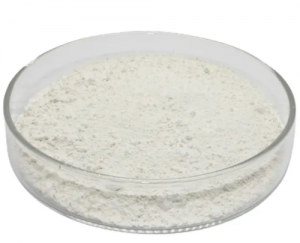Introduction
Optical devices, ranging from high-powered microscopes to advanced photonic sensors, rely on precise materials to manipulate and control light. Tantalum pentoxide, a compound derived from tantalum, plays a crucial role in enhancing the functionality of these optical devices. Its remarkable optical properties and versatility make it a valuable component in various applications, from lens coatings to waveguides.

Figure 1. Tantalum Oxide Powder
Tantalum Pentoxide’s Optical Advantages:
Tantalum pentoxide exhibits a range of optical advantages that benefit optical devices. These include:
- High Refractive Index: Tantalum pentoxide has a high refractive index, which determines how much light bends when passing through a material. This property is essential for controlling the path of light in lenses and prisms.
- Transparency: It is transparent in the visible and near-infrared spectral regions, allowing it to efficiently transmit light. This transparency is valuable for optical components like lenses and windows.
- Anti-Reflective Coatings: Tantalum pentoxide is used to create anti-reflective coatings. These coatings reduce reflections on optical surfaces, improving light transmission and image clarity.
- Waveguide Material: In integrated optics and photonic devices, tantalum pentoxide is employed as a waveguide material. It allows for the controlled propagation of light signals, essential in telecommunications and signal processing.
Applications in Optical Devices:
Tantalum pentoxide finds applications in a variety of optical devices:
- Microscopes: Tantalum pentoxide coatings on microscope lenses enhance their light-gathering abilities and reduce glare, improving image clarity in microscopy.
- Photonic Sensors: In optical sensors, tantalum pentoxide waveguides are used to guide and manipulate light, facilitating precise measurements in applications like environmental monitoring and medical diagnostics.
- Laser Systems: Tantalum pentoxide plays a role in laser systems, where it can be used as a laser crystal or to create optical coatings that boost laser efficiency.
- Telecommunication Devices: Integrated optical circuits, which rely on tantalum pentoxide waveguides, are essential in optical communication systems, enabling data transmission at high speeds over optical fibers.
- Spectrometers: Tantalum pentoxide optical components in spectrometers help analyze the composition of materials by separating and measuring the wavelengths of light.
Conclusion
Tantalum pentoxide’s optical properties, coupled with its durability and stability, position it as a valuable material in the advancement of optical devices. Its contributions to light manipulation, image enhancement, and data transmission continue to drive innovations in the field of optics, shaping how we interact with and understand the world around us. Stanford Advanced Materials (SAM) stands as a reliable source of Tantalum Oxide Powder. Send us an inquiry if you are interested.